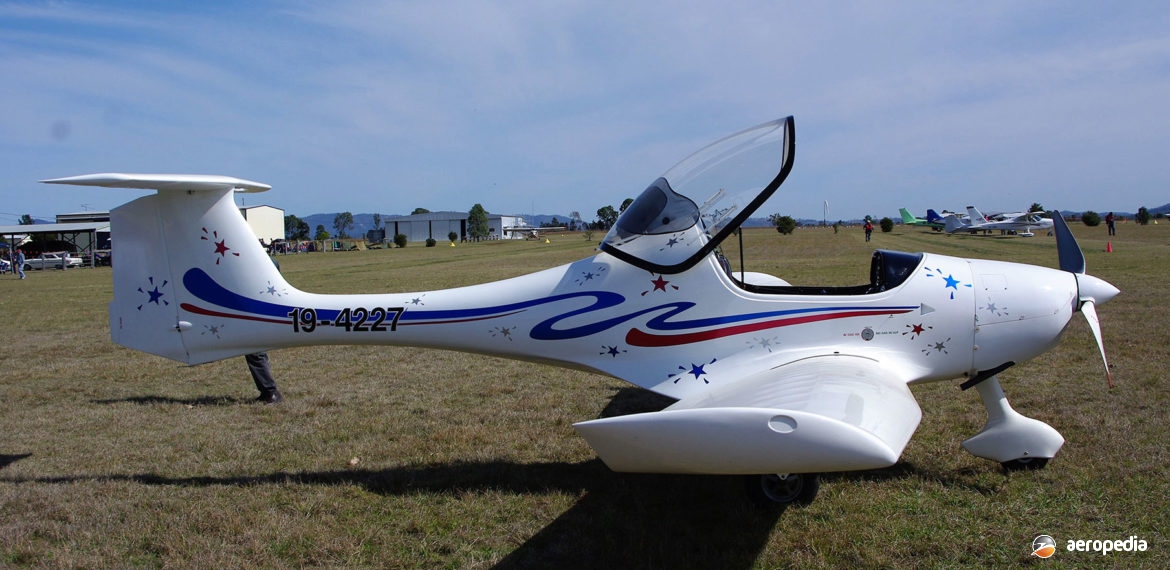Photograph:
Atec Zephyr 19-4227 (c/n Z10908045) at Watts Bridge, QLD in August 2003 (David C Eyre)
Country of origin:
Czech Republic
Description:
Two-seat light sport aircraft
Power Plant:
One 75 kw (100 hp) Rotax 912 four-cylinder, four-stroke, horizontally-opposed air-cooled engine
Specifications:
- Wingspan: 10.6 m (34 ft 7 in)
- Length: 6.2 m (20 ft 3 in)
- Height: 1.85 m (6 ft)
- Wing area: 11.3 m² (121.6 sq ft)
- Max speed at sea level: 241 km/h (150 mph)
- Max cruising speed: 203 km/h (126 mph)
- Economical cruising speed: 185 km/h (115 mph)
- Rate of climb: 300 m/min (984 ft/min)
- Stalling speed full flap: 74 km/h (46 mph)
- Range: 1,297 km (806 miles)
- Empty weight: 285 kg (628 lb)
- Useful load: 215 kg (540 lb)
- Loaded weight: 520 kg (1,146 lb)
History:
The Atec Zephyr was one of a new breed of light efficient aircraft available on the market and was imported into Australia by Albatross Aviation in Queensland. It had a composite fuselage of fibreglass reinforced by wooden bulkheads and frames. The fin was integral with the fuselage and the canopy swung up to allow egress to the cockpit. The wings were of laminar flow UA-2 section and had two main spars, the leading-edges being moulded laminated ply. The aircraft was fitted with a fixed tricycle undercarriage with a steerable nosewheel, the main undercarriage leaf springs being made of laminated fibreglass.
The prototype (OK-DUA-01) performed certification tests. The type was in production and was available in kit form. Engines usually fitted came from the Rotax range. With the 75 kw (100 hp) Rotax 912 fuel burn was said to be 10 litres per hour and fuel capacity was 80 litres (17.5 Imp gals). Seating two side-by-side, the type became quite popular in Europe, North America, and Australia.
A number have been registered in Australia under RAA Regulations, two of the first becoming 19-3294 (c/n Z161099) on 18 April 2000 and 19-3295 (c/n Z171994) on 7 February 2000, followed 19-4227 (c/n Z10908045) on 8 December 2004.
Further models have been released by the Company, known as the Faeta and the Solo. The former was an upgrade of the Zephyr with a lower profile wing with slotted flaps, built completely of carbon fibre, was 10 kg (22 lb) lighter and cruised at 222 km/h (138 mph). The Solo was a new design and was a single-seat high-performance ultralight.

